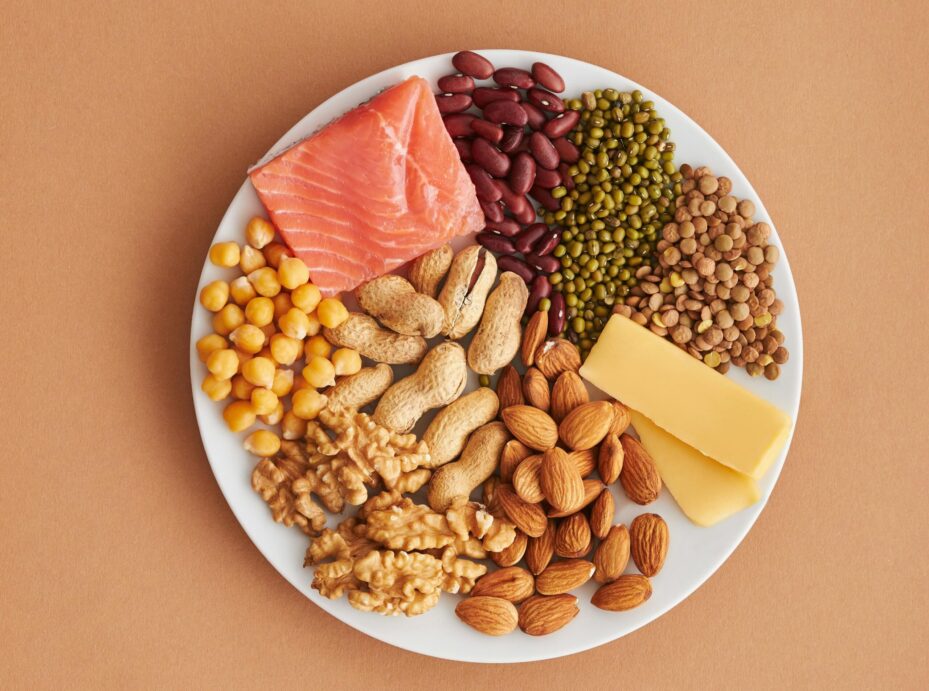This is a post on a health-related topic. We are not medical or other trained health professionals. The information presented here was what learned about ourselves on our journey. Your journey is different and it is best to consult your doctor or other medical professional before making a change. Please see our disclaimer at Before Making Lifestyle Changes before making any changes to diet, activity, etc.
We hear all sorts of advice about making sure we eat enough protein. Previously, we discussed it as a key building block of the body. In this post, we will ask what is enough and give you some tools to answer what enough is for you. As with all things human, we found there isn’t a single answer. What is worse is that not all proteins are complete. By the end of this post, we hope to give you the tools you need to come to your own conclusion on what is enough.
Not all Proteins are the Same
First off, not all proteins are the same. There are two basic types; complete and in-complete. To be complete the protein must contain all nine essential amino acids. What is an essential amino acid? An essential amino acid is something your body needs but cannot synthesize out of other nutrients.
We bring protein up completeness as an FYI. Completeness will become more important to understand later as many things like nuts and legumes don’t supply a complete protein. Many people feel uncomfortable with consuming meat and dairy. If you do, it is best to know about complete vs incomplete proteins so that you can choose a balanced approach. This is a reason that vegetarian and vegan diets can be more complex to maintain.
TL; DR; Let’s Talk About How Much
Yes, but what do I need for protein? Guess what, like all things health it changes with age, weight, activity, and other factors like pregnancy. This all sounds similar to our post on BMR which uses BMI. The general formula for adults in the US is 0.8 grams of protein per kilogram of body weight or 0.36 grams per pound.
That 0.8 is close to the 0.75 grams recommended by the British Heart Foundation. Like BMR, the devil is in the details. The good news is that the USDA has a Dietary Reference Intakes (DRI) calculator you can use. The even better news is that the calculator also shows things like carbohydrates and fiber. That’s correct, we are now talking about macronutrients.
Back to Logging
If you read our post on being honest with calories, we discussed logging your meals in an app. If you have done that work, you can probably see the macronutrient breakdown. Some apps sell this functionality as an add-on. The important takeaway is that when you log your food, you should pick from verified sources or use the barcode. By doing that, you will allow yourself to see your macronutrients to have the data to answer if you are lining up or not with guidelines and/or your goals.
Yes, we did say earlier we will stay away from nutrition in this blog. We just used the words nutrients. Worse still, we said macronutrients. What’s going on? After we researched calories, we realized we were no longer willing to take the nutrition labels for granted anymore. While we don’t make any assumptions about your needs or goals, we want to understand if we could remain balanced in our approach to food. The only way to know if we were getting enough was to track it so we are being as transparent as possible.
But I Want to Gain?

But this begs the question but what about those wanting to gain muscle mass? If you spend any time around time around sports training programs or gyms you will hear protein is where it is at. Mass Bingham General recommends that to gain muscle mass you may need to increase from 0.8 grams to 1.2 to 1.7 grams per kilogram of body weight. That increase roughs out to between 0.45 to 0.76 grams per pound.
Which is right for you? We feel this is where things descend into confusion. That depends on your goals. Do you want to increase or decrease your weight? We didn’t say gain muscle and lose fat in the same sentence. Of course, we all want to do that. Why is that so hard for many people? We will do another post on that later because that is called body recomposition which is complicated. It is complicated because it is applying two different processes which are contradictory.
Let’s Stick to the Basics For Now
If we stick to DRI, we get from it a recommendation of protein. Now to figure out how to get it into our diet. Eat more steak? What about more fish and chicken? Maybe some jerky and peanuts would work. We can even substitute it with a protein shake! Each of these comes with a cost either financial or health related. That is another subject for another post.
Researching included here helped us reset our thoughts on protein. We will pause here as we, and you, now have the tools to at least determine what we all need. From here we can use these tools to help us towards our goals. We have discussed the types of proteins and some of the confusion in this area of how much is needed. We still need to address how to get them and the costs associated with them but both of those can wait for another post after more research.
